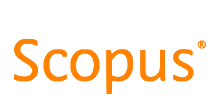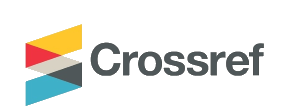Academic work-integrated learning (WIL): Reengaging teaching-focused academics with industry
DOI:
https://doi.org/10.21153/jtlge2017vol8no1art627Keywords:
teaching-focused academic, work-integrated learning, industry engagementAbstract
There has been an increase in the number of teaching-focused academics at Australian universities over recent years. However, research-focused and teaching-research academics have an advantage over teaching-focused academics in terms of promotion, forced redundancies and tenure. While evidence of research success is measured by volume (number of publications and research income), evidence of teaching scholarship is less quantifiable. The value of industry-university collaboration has been reported widely. However, the focus is on the value of the knowledge transfer of university research to industry and collaborative industry-university research. Academics collaborating with industry partners on research projects are able to experience current industry practice firsthand, raising the question: How do teaching-focused academics remain engaged with industry? The benefits of work-integrated learning (WIL) to hosts, students and universities are well documented. This paper poses the question: Is a WIL placement a way to reengage teaching-focused academics with industry?, and introduces the concept of ‘Academic WIL’ where academics complete an internship placement with an industry partner. The impact on graduate employability is discussed and a methodology for a teaching-focused academic to use their Academic WIL experience as evidence of their achievements in the scholarship of teaching is presented.
Metrics
References
Australian Nursing and Midwifery Accreditation Council, (2012). Program accreditation. Retrieved from: https://www.anmac.org.au/program-accreditation
Australian Qualifications Framework Council (2013) Australain Qualifications Framework. Retrieved from: https://www.aqf.edu.au/sites/aqf/files/aqf-2nd-edition-january-2013.pdf
Australian Industrial Relations Commission. (2007). Higher Education Academic Salaries Award 2002 (Variation PR976392). Canberra: Australian Industrial Relations Commission, Retrieved from: http://www.airc.gov.au/consolidated_awards/ap/ap820200/asframe.html.
Australian Nursing and Midwifery Accreditation Council. (2012). Registered Nurse Accreditation Standards 2012. Retrieved from: www.anmac.org.au
Australian Qualifications Framework Council. (2013). Australian Qualifications Framework. Retrieved from: http://www.aqf.edu.au/wp-content/uploads/2013/05/AQF-2nd-Edition-January-2013.pdf
Australian Research Council. (2016). History of ARC. Retrieved from: http://www.arc.gov.au/history-arc
Australian Workforce and Productivity Agency. (2015). Work integrated learning: A scoping paper. Retrieved from: http://www.voced.edu.au/content/ngv%3A62963
Baxter, P., & Jack, S. (2008). Qualitative case study methodology: Study design and implementation for novice researchers. The Qualitative Report, 13(4), 544–559.
Bekkers, R., & Freitas, I. M. B. (2008). Analysing knowledge transfer channels between universities and industry: To what degree do sectors also matter? Research Policy, 37(10), 1837–1853.
Bennett, D., Roberts, L., & Ananthram, S. (2017). Teaching only roles could mark the end of your academic career. Retrieved from: http://theconversation.com/teaching-only-roles-could-mark-the-end-of-your-academic-career-74826
Bennett, D., Roberts, L., Ananthram, S., & Broughton, M. (2017). What is required to develop career pathways for teaching academics? Higher Education,1–16.
Bentley, P. J., Coates, H., Dobson, I. R., Goedegebuure, L., & Meek, V. L. (2013). Academic job satisfaction from an international comparative perspective: Factors associated with satisfaction across 12 countries. In P. Bentley, H. Coates, I. Dobson, L. Goedegebuure & V.L. Meek (Eds.), Job satisfaction around the academic world (pp. 239–262). Dordrecht: Springer.
Bexley, E., James, R., & Arkoudis, S. (2011). The Australian academic profession in transition: Addressing the challenge of reconceptualising academic work and regenerating the academic workforce. Canberra:DEEWR. Retrieved from: http://melbourne-cshe.unimelb.edu.au/__data/assets/pdf_file/0010/1490923/The_Academic_Profession_in_Transition_Sept2011.pdf
Boyd, W. E. (2013). Does Boyer’s integrated scholarships model work on the ground? An adaption of Boyer’s model for scholarly professional development. International Journal for the Scholarship of Teaching and Learning, 7(2), 25.
Boyer, E. (1990). Scholarship reconsidered: Priorities of the professoriate. Princeton, NJ: Carnegie Foundation for the Advancement of Teaching.
Boyer, E. (1996). The scholarship of engagement. Bulletin of the American Academy of Arts and Sciences, 49(7), 18–33.
Business Industry and Higher Education Collaboration Council. (2007). Graduate employability skills. Prepared by Precision Consultancy. Retrieved from: http://www.voced.edu.au/content/ngv:19437
Chalmers, D. (2011). Progress and challenges to the recognition and reward of the scholarship of teaching in higher education. Higher Education Research & Development, 30(1), 25–38.
Chalmers, D., Cummings, R., Elliott, S., Stoney, S., Tucker, B., Wicking, R., & Jorre De St Jorre, T. (2014). Australian university teaching criteria and standards project. Retrieved from: http://uniteachingcriteria.edu.au/
Coates, H., Dobson, I. R., Goedegebuure, L., & Meek, L. (2009). Australia's casual approach to its academic teaching workforce. People and Place, 17(4), 47–54.
D’Este, P., & Patel, P. (2007). University–industry linkages in the UK: What are the factors underlying the variety of interactions with industry? Research Policy, 36(9), 1295–1313.
Deloitte Access Economics Pty Ltd, & Office of the Chief Scientist. (2014). Australia’s STEM workforce: A survey of employers. Retrieved from: http://www.chiefscientist.gov.au/wp-content/uploads/DAE_OCS-Australias-STEM-Workforce_FINAL-REPORT.pdf
Department of Education and Training. (2016). 2015 Staff full-time equivalence. Retrieved from: https://docs.education.gov.au/node/38391
Department of Industry Innovation Climate Change Science Research and Tertiary Education, & Department of Education Employment and Workplace Relations. (2013). Core skills for work developmental framework. Retrieved from: https://docs.education.gov.au/system/files/doc/other/cswf-overview.pdf
Department of Primary Industries. (n.d.). Barriers to fish passage. Retrieved from: http://www.dpi.nsw.gov.au/fishing/habitat/threats/barriers
Dyer, S., Walkington, H., Williams, R., Morton, K., & Wyse, S. (2016). Danger! Quicksand. The experiences of teaching-only academics in UK Higher Education. Retrieved from: https://www.srhe.ac.uk/conference2016/abstracts/0234.pdf
Edwards, D., Bexley, E., & Richardson, S. (2011). Regenerating the academic workforce: The careers, intentions and motivations of higher degree research students in Australia. CAnbera:DEEWR. Retrieved from: http://research.acer.edu.au/higher_education/23/
ESRI Australia. (2017). Find GIS courses. Retrieved from: https://esriaustralia.com.au/find-gis-courses#city
Farr, M. (2008). For teaching-only faculty, a controversial role. University Affairs. Retrieved from: http://www.universityaffairs.ca/features/feature-article/those-who-can-teach/
Higher Education Academy. (2011). The UK Professional Standards Framework for teaching and supporting learning in higher education. Retrieved from London:
Hurtado, S., Eagan, M. K., Pryor, J. H., Whang, H., & Tran, S. (2012). Undergraduate teaching faculty: The 2010–2011 HERI Faculty Survey. LA: Higher education Research Institute. Retrieved from: http://www.heri.ucla.edu/monographs/HERI-FAC2011-Monograph.pdf
Israel, M. (2011). The key to the door? Teaching awards in Australian higher education. Fellowship Final Report. Sydney:ALTC. Retrieved from: https://www.flinders.edu.au/Teaching_and_Learning_Files/awards/College/Israel_executive%20summary%20and%20advice.pdf
Jackson, D. (2010). An international profile of industry-relevant competencies and skill gaps in modern graduates. International Journal of Management Education, 8(3), 29–58.
Knight, P. T., & Yorke, M. (2003). Employability and good learning in higher education. Teaching in Higher Education, 8(1), 3–16.
Locke, W. (2014). Shifting academic careers: Implications for enhancing professionalism in teaching and supporting learning. York, UK: Higher Education Academy.
Malcolm, M. (2014). A critical evaluation of recent progress in understanding the role of the research-teaching link in higher education. Higher Education, 67(3), 289–301.
Morgan, G. (2016). Dangers lurk in the march towards a post-modern career. The Sydney Morning Herald. Retrieved from: http://www.smh.com.au/comment/dangers-lurk-in-the-postmodern-career-that-is-missing-job-security-20161017-gs3u5o.html
Neumann, R. (1992). Perceptions of the teaching-research nexus: A framework for analysis. Higher Education, 23(2), 159–171.
Neumann, R. (1996). Researching the teaching-research nexus: A critical review. Australian Journal of Education, 40(1), 5–18.
Norton, A. (2013). Taking university teaching seriously. Sydney: Grattan Istitute. Retrieved from: http://grattan.edu.au/wp-content/uploads/2013/07/191_Taking-Teaching-Seriously.pdf
Nursing and Midwifery Board of Australia. (2016). Registration standard: Recency of practice. Retrieved from: http://www.nursingmidwiferyboard.gov.au/Codes-Guidelines-Statements/FAQ/recency-of-practice.aspx
Nyamapfene, A. (2014). The teaching-only academic role in research intensive universities: A case of spoiled identity? Paper presented at the STEM Annual Conference 2014, Edinburgh.
Office for Learning and Teaching. (2016). Retrieved from: http://www.olt.gov.au/
Orrell, J. (2011). Good Practice Report: Work-integrated learning. Sydney: Australian Learning and Teaching Council.
Patrick, C.-j., Peach, D., & Pocknee, C. (2008). The WIL [work integrated learning] report: Work integrated learning: A national scoping study. Final report. Sydney:ALTC. Retrieved from: http://eprints.qut.edu.au/44065/1/WIL-Report-grants-project-jan09.pdf
Phelan, L., McBain, B., Ferguson, A., Brown, P., Brown, V., Hay, I., . . . Taplin, R. (2015). Learning and teaching academic standards statement for environment and sustainability. Sydney: OLT.Retrieved from: http://environmentltas.gradschool.edu.au/about/about-the-project/
PhillipsKPA. (2014). Engaging employers in work integrated learning: Current state and future priorities. Retrieved from: https://docs.education.gov.au/documents/engaging-employers-work-integrated-learning-current-state-and-future-priorities
Probert, B. (2013). Teaching-focused academic appointments in Australian universities: Recognition, specialisation, or stratification? Sydney: OLT. Retrieved from: http://apo.org.au/resource/teaching-focused-academic-appointments-australian-universities-recognition-specialisation#block-views-citation-popup-block
Sanders, L. C. (2011). Teaching-stream positions: Some implications. Council of Ontario Universities.
Schartinger, D., Rammer, C., Fischer, M. M., & Fröhlich, J. (2002). Knowledge interactions between universities and industry in Austria: Sectoral patterns and determinants. Research policy, 31(3), 303–328.
Smith, C., Ferns, S., & Russell, L. (2014). The impact of work integrated learning on student work-readiness. Sydney: OLT. Retrieved from: http://www.olt.gov.au/resource-impact-work-integrated-learning-student-work-readiness
Universities Australia. (2015). Higher education and research facts and figures. Retrieved from: https://www.universitiesaustralia.edu.au/australias-universities/key-facts-and-data#.WC44-bJ96Uk
Vardi, I., & Quin, R. (2011). Promotion and the scholarship of teaching and learning. Higher Education Research & Development, 30(1), 39–49.
Whelan, M. (2017). Road testing graduate attributes and course learning outcomes of an environmental science degree via a work-integrated learning placement. Asia-Pacific Journal of Cooperative Education, 18(1), 1–13.
Yin, R.K. (2009). Case study research: Design and methods (4th ed.). Thousand Oakes, CA: Sage.











